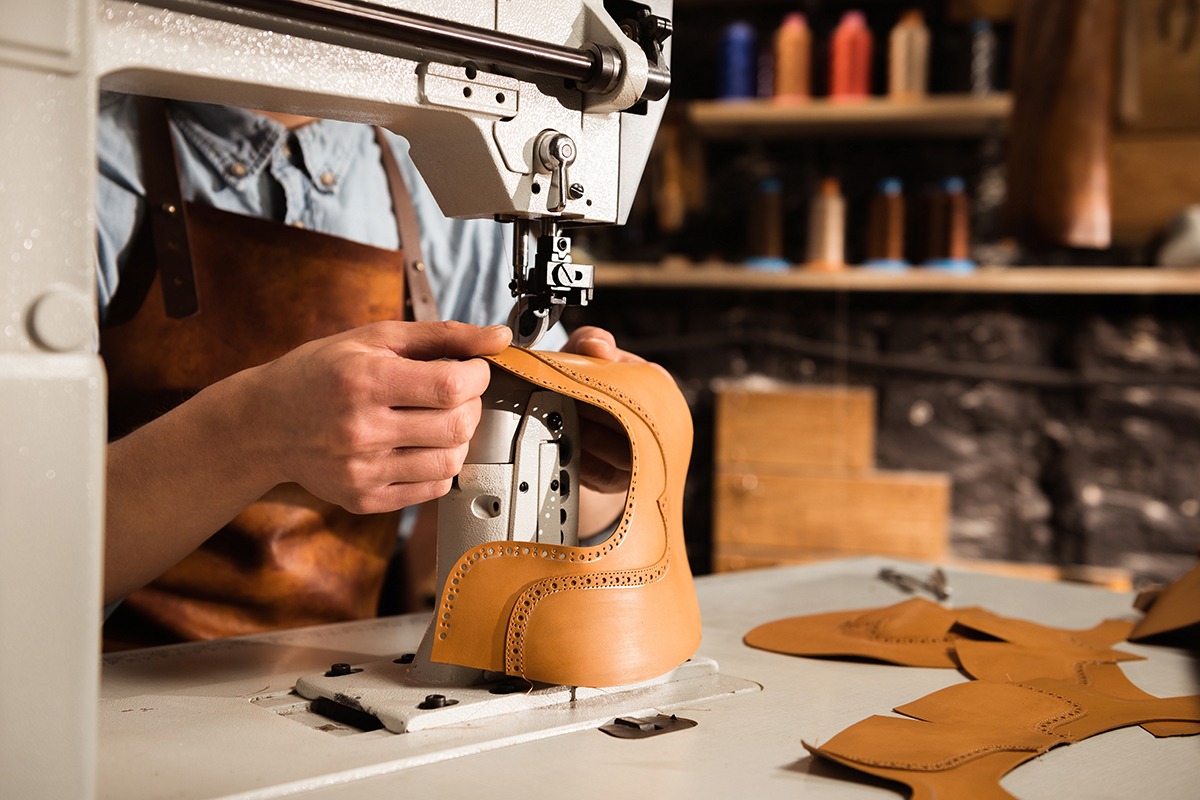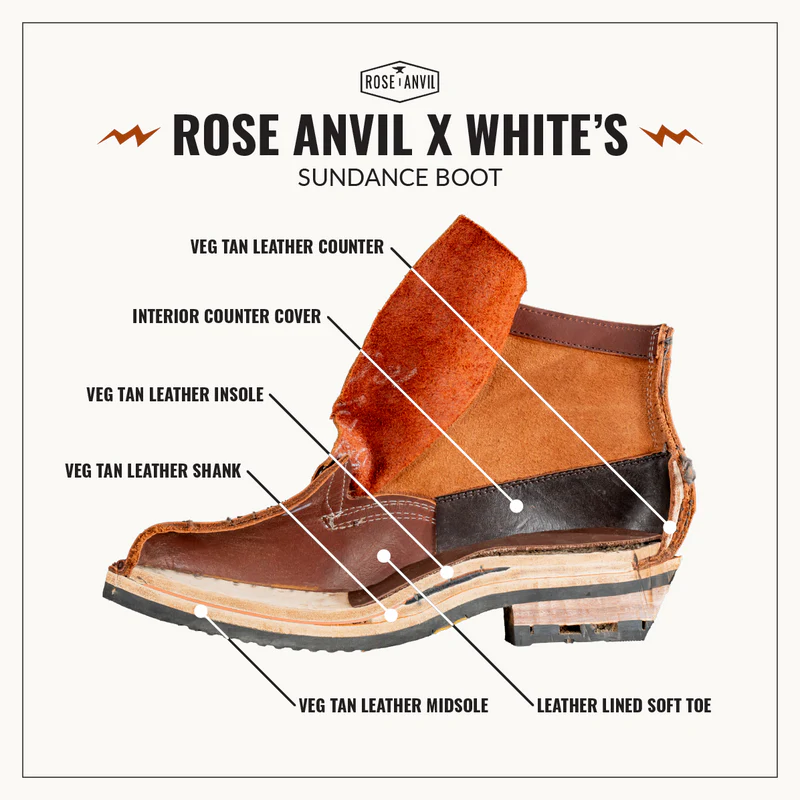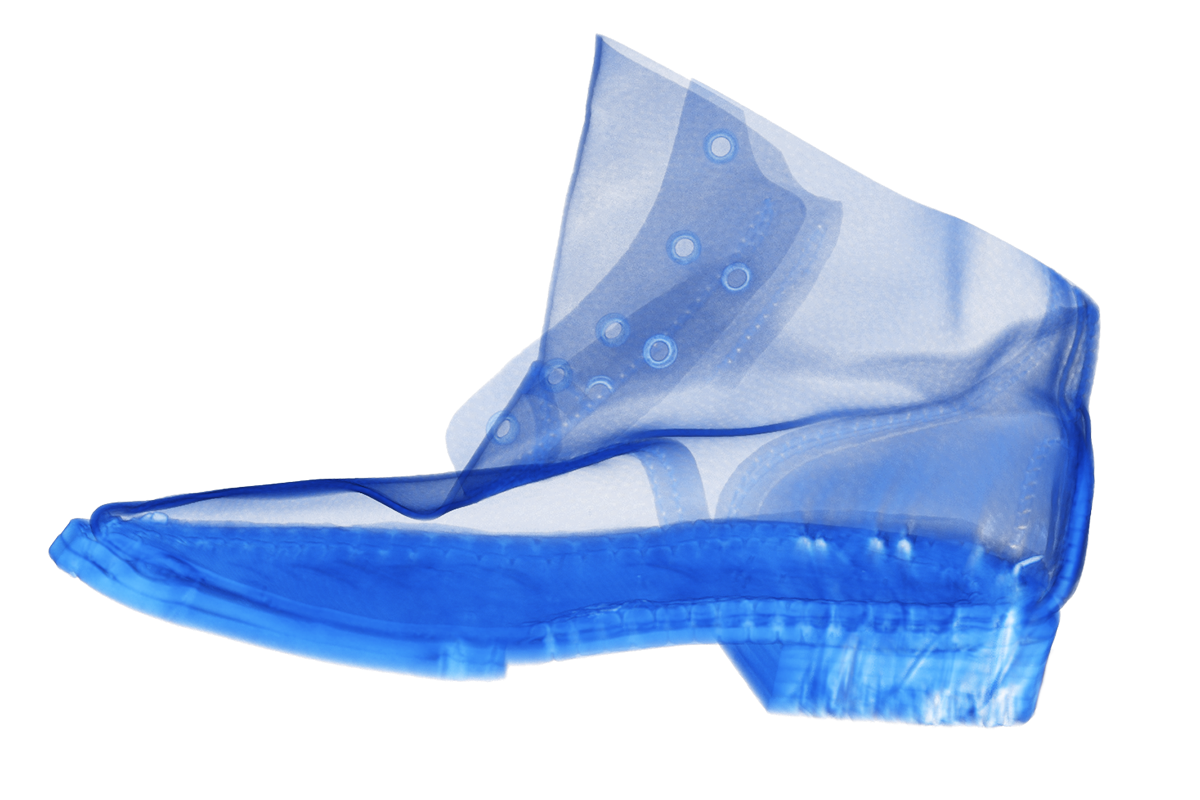When I first started cutting shoes in half, I thought quality was just about what you get for your money. Do you get higher quality materials or not? But once I started learning more about barefoot shoes, I realized that there’s more to comfort than just materials. The shape of the last matters. Fit matters. There’s so much more to it than meets the eye.
Quality is a multifaceted thing. Materials, aesthetic, and fit are indispensable elements of it, but the way you use the shoes is what puts quality to the test. You have to gather as much information as possible to find the right shoe for your needs. Do you have wide feet? Then you need a wide shoe. Are you doing heavy duty work? You need something durable enough for that. Winter? You need insulation and grip. The problem is that most people don’t even know what’s inside footwear unless you literally cut it in half.
Myths about brands and countries
I run a YouTube channel called Rose Anvil, where I cut shoes and boots in half to learn about their construction. What started as just wanting to understand why some boots last decades and others fall apart in months has turned into hundreds of detailed teardowns. I’ve cut open more than 500 pairs, from luxury brands to bargain-bin imports, and what I’ve found along the way has changed how I think about quality, value, and the way things are made.
Over the last 500 pairs of shoes I’ve cut open, I’ve seen how older brands that get bought and sold over and over end up strip-mining all the value.
One of the biggest misconceptions of footwear manufacturing is that brands with long histories are automatically better. Over the last 500 pairs of shoes I’ve cut open, I’ve seen how older brands that get bought and sold over and over end up strip-mining all the value. They squeeze margins to pay off the business deal and the end consumer foots the bill.

Same with countries. Many people automatically assume that everything made in China is garbage. But look at Grant Stone. They produce some of the highest quality footwear in the world, and it’s made in China. On the other side, you’ve got the $10 boots you see on Temu, where you don’t even know what will show up. Is that China’s fault, or is that because people want to buy something for $5 that should cost $50?
The factory will build to whatever standard the brand sets.
It’s easy to blame where something’s made, but the truth usually comes down to choices made higher up. The factory will build to whatever standard the brand sets. When Dr. Martens moved most of their production out of England, people were right to complain. The quality dropped. But that wasn’t because the factories overseas couldn’t make them well. It was because the company told those factories to make cheaper boots to boost margins. They could have kept the same quality at a lower price, but they chose not to.
Reading leather without cutting it
Many people ask me how to assess the quality of leather. Here are a few signs you can look for. If you can see the raw edge, look at the fibers. Toward the top, closer to the smooth surface, the fibers should get really fine, almost solid. That means the grain is intact, which is the most sought-after part of leather. It looks smooth, but it’s also really strong because it binds all the looser suede fibers together.
As a general rule, the more real leather you see in footwear, the higher the quality.
Feel matters too. If leather feels foamy, dry, or like it could crack and fall apart, that’s obviously not a positive sign. If it feels almost wet to the touch or like it has conditioner or oil in it, that usually means they went the extra mile in finishing. As a general rule, the more real leather you see in footwear, the higher the quality.

Pigskin is an interesting use case. It’s thinner than cowhide, but has a tighter fiber structure and big pores. Sometimes the pores even go all the way through. That makes it breathable and strong in thinner cuts. You can make an unlined pigskin boot that’s lightweight, durable, and breathable in a way you can’t with cowhide. The downside is the hides are smaller and supply is limited, so it’s ultimately harder to work with.
Materials that fail and materials that last
Everyone has probably worn through the inside heel of a shoe. That’s one of the most common failure points. Higher-quality boots often have a suede or roughout leather cover inside the heel. It grips better, molds to your heel, and resists abrasion.
Underfoot tells another story. For centuries people stood on leather midsoles. Leather shapes to your foot, absorbs sweat, and doesn’t smell as much. It’s also expensive and firmer than foams, which is why rubber and foams have taken over. Foams are cheaper, softer right away, but they don’t last as long.
If you pull the insole and look underneath, you’ll see what you’re really standing on. Is it leather, fiberboard, or just thin fabric? That’s an excellent indicator of the lifespan you can expect from a shoe.
Buying smarter with materials in mind
Don’t trust the brand name alone. Feel the shoe for yourself. Look at it closely. Compare it to other shoes at the same price point. There is a minimum buyable product. If you’re buying footwear under $40, or boots under $100, something has to give. The quality will be poor enough that it likely will fall apart fast. In the long run, people often spend more replacing cheap footwear than they would by buying one decent pair. If you’re on a budget, you’re better off getting a used pair of higher-quality boots than a brand new $40 pair.
When cheap materials fail, you pay for it twice: once when the shoe breaks and again when you replace it.
People sometimes argue that spending more is just about fashion or image, but footwear really is a tool. Shoes are the equipment that get you from point A to point B, that keep you working, and that carry all of your body weight every day. When cheap materials fail, you pay for it twice: once when the shoe breaks and again when you replace it. Better materials may cost more upfront, but they save you money, time, and frustration.
How it changed the way I buy
Good shoes balance health, quality, story, and style. You wear them every day. Shoes are the one thing separating you from the ground. All of your weight rests on them. That means materials matter.
I want to support brands that still care about craft, not the ones that have been bought and sold until they’re just a shadow of what they were.
As a consumer, I’ve become picky with my choice of shoes. I want to support brands that still care about craft, not the ones that have been bought and sold until they’re just a shadow of what they were. I like finding footwear with a story behind it. It becomes a conversation piece, and it makes the experience of wearing them more enjoyable.

I’ve also changed for health reasons. Barefoot shoes, wide toe boxes, zero drop are all design choices that make you realize that shoes should actually be shaped like feet. Once you wear wider shoes for a while, putting on a narrow pair feels terrible.
We spend all this time worrying about posture in chairs. Shoes deserve at least as much attention. They’re the foundation for our movement through the world.


.png)

